I lay back on the bench and went through the same set-up ritual I'd done thousands of times before. My three warm-up sets were complete and this was my first working set. I was preparing for a bench press contest, my first in almost 10 years. My right shoulder was sore, but I had learned to live with the pain.
I really had no business benching heavy again, but my thick head was in denial. I grabbed a random guy in my vicinity to spot me. I had 275 pounds loaded on the bar, and this was going to be an easy double on my way up to 300. I took control of the bar after the liftoff and started the slow descent. Just as the bar touched my chest, I felt it: an obvious pop in my right shoulder.
In my mind, the sound echoed throughout the gym. I was frozen with fear, and luckily my spotter immediately realized something was wrong and lifted the bar up. I sat up on the bench, grabbed my shoulder, and stared at the floor. My arm went numb and I knew something very bad had just happened. Thoughts of surgery flashed through my mind. A future of pain, meds, physical therapy, and dare I say it ... missed workouts and atrophy.
I instantly sank into a deep depression.
The Diagnosis
An MRI showed that my supraspinatus tendon was hanging by a thread. I had a small tear in my labrum, and some bone spurs. The tears had occurred instantly, but the spurs had formed during years of grinding. The bottom line: I needed surgery.
One week after surgery, I started physical therapy and was back at the gym. I was followed the program my physical therapist set up to increase my range of motion and strength. Working your rotator cuff muscles is tedious, time consuming, and boring, but it will save you a boatload of problems later on.
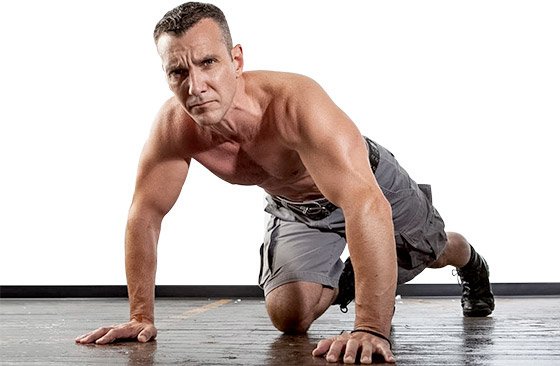
I couldn't train in any way that involved my right shoulder, but I certainly wasn't going to use that as an excuse to give up on my training altogether. There was no way I was going to sit and watch so many years of effort just fade away. I could still train my legs, abs, lower back, and the entire left side of my upper body.
My surgeon gave me a thick nylon belt to wrap around my waist, with a smaller loop that wrapped around my right lower biceps. The belt secured my elbow to my side so my right shoulder was immobile.
You might assume that training one side of your body would cause you to develop a strangely uneven appearance, but the body is an amazing organism. Our bodies strive to be symmetrical, and this occurs through a phenomenon called cross education.
Cross Education
Cross education is a process through which training one side of the body benefits the untrained side of the body. While the definite mechanisms of cross education are still unclear, the fact of its existence has been known since the 1800s.
Theories involve motor pathways and neural circuits, and delve deeper into science than I need to. Various studies have proven that unilateral strength training has a positive effect on the untrained side, and that's evidence enough for me.
Not only does the untrained side retain strength, but some studies have even shown the untrained side could increase in strength. Furthermore, an immobile limb will lose less range of motion if the opposite side is trained during a long recovery.
Sadly, studies have never shown hypertrophy (actual increase is muscle size) in the untrained limb, but it's definitely possible to retain muscle mass after an injury or surgery.
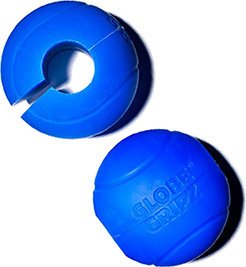
My Training Program
I worked my left side with machines, cables and dumbbells. One item in my gym bag of tricks that assisted me through this was my Globe Gripz. Working just my left side was awkward, but using my Globe Gripz made pressing movements more comfortable.
I was also concerned that if my left side developed tendonitis, my training would be really screwed. The Globe Gripz saved me some wear and tear.
Further into my recovery, I used them in both hands, to find angles that didn't aggravate my shoulder.
Training strategies
I couldn't run when first rehabilitating my shoulder, but I continued my HIIT cardio training using an elliptical machine or a stationary bike.
I worked my back with single-arm pull-downs and cable rows, and used an assisted pull-up machine to perform one-arm pull-ups.
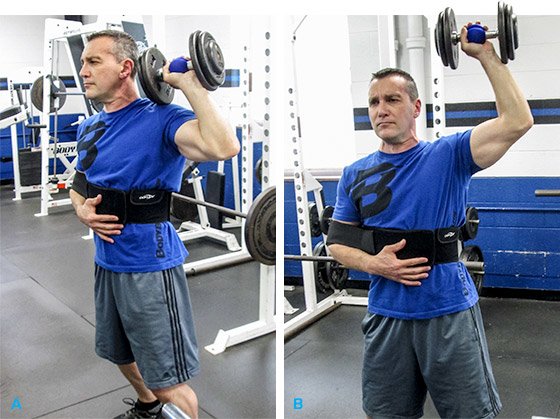
Single Arm Dumbbell Press
Single-arm dumbbell presses made up the brunt of my chest training. It's not easy to get a single heavy dumbbell in place, so I had to really drive my left foot into the floor to keep my balance on the bench.
I worked my left shoulder with dumbbell laterals and presses, and even threw in single-arm dumbbell snatches for some dynamic work.
I worked my forearms with wrist curls and reverse wrist curls, and continued my strength training for my grip.
I found extra time to train my calves with seated calf raises and donkey calf raises.
I performed squats in a Smith machine using my left hand to secure the bar. My gym has a Smith-style machine in which the bar can flow back and forth as well as up and down.
I like this machine because it's closer to performing actual free-standing squats. I didn't want to put a heavy bar across my shoulders, so I did sets of high-rep breathing squats—sometimes as many as 100.

Smith Machine Squat
I'll admit that this type of restricted training isn't fun. I had to really dig deep to motivate myself to get to the gym and get it done. My biggest motivation was the thought of what would happen to my body if I didn't train.
My surgeon recommended no resistance training that involved my right shoulder until nine weeks after surgery, but I've never been a good patient.
Training The Bad Side
After four weeks, I began working my right biceps with very light dumbbell curls and my right triceps with very light cable pushdowns. Again, I made use of my Globe Gripz to find the exact angles to relieve any pain.
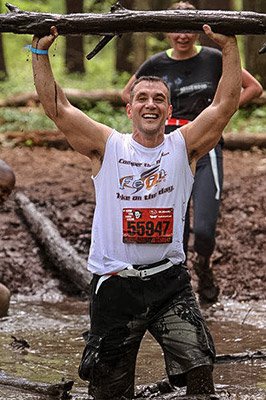
After five weeks, I stopped wearing the belt that secured my right arm. I was determined to start regaining my strength.
After six weeks, I realized I could use the Hammer Strength Iso-Lateral Curl machine. The elbow pads are elevated, so there was no pressure on my shoulder. I could finally work my right biceps with some real weight. Hammer Strength also makes a similar machine for the triceps and that worked equally well. Psychologically, I felt motivated to train again.
Eight weeks out, I added lying triceps extensions with 15-pound dumbbells, and at nine weeks I started doing planks in a fully locked-out push-up position.
Ten weeks out, I began performing chest presses with 15-pound dumbbells. My right side felt weak and would dictate when my set was done. A tendon heals about 5 percent each week, so I decided to grab a pair of bells that were 5 pounds heavier each week.
Twelve weeks after surgery, I was back to working all the muscles in my right shoulder. I managed to hold on to most of my muscle mass, and I was feeling stronger every day.
The past three months had really tested me mentally and physically, but I felt that my rehabilitation had been successful. I was confident that I'd regain the rest of my strength in a couple more months.
All Is Not Lost
Shoulder injuries are as common in the gym as sleeveless shirts. If you've been training for years, chances are you've suffered some type of injury—or are at risk for one. Just know that there are ways to work around almost any injury if you have the willpower and the drive to persevere.
I discovered the hard way that retaining muscle after surgery is possible, but keep in mind the old saying: "An ounce of prevention is worth a pound of cure."
So check your ego at the gym door, do your rotator cuff exercises, and remember that training smarter is better than training harder.
Recommended For You
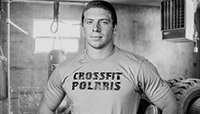
Be More Than Strong. Be Tough!
Toughness can't be categorized in a rep range or a fiber type. It's everything you do in the gym and more. You don't need to be tough—until, one day, you do.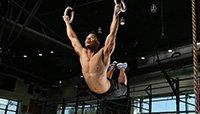
CrossFit Competitions: How To Prepare To Perform Your Best
Heading to your local box to do the house WOD is one thing, but learning how to prepare your mind and body for a competition is an entirely different beast. Here's how to prepare for a CrossFit competition!
